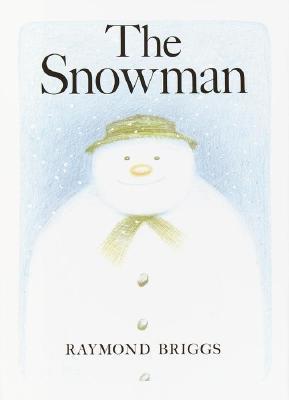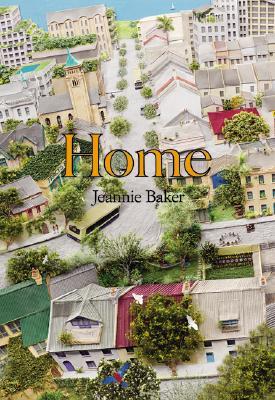I love the
lyrical text of a picture book such as Malachy’s ‘Dancing Tiger’. I love the pow zap language action of comic
strip stories. I love the expressive
font usage of particular words in Lauren Child’s ‘That Pesky Rat’. I love the use of pictures as if they were words
in Polly Dunbar’s ‘Penguin’. But I also
love picture books with no words in them at all. In fact I have an ambition to be the author
of a book with no words in it at all. I
want to dream-up visual story or stories that will be realised by somebody else
– an artist – and I want my picture ideas to be enough without words.
Why? Because pictures on their own leave the
audience to do the work of noticing all there is to notice; the job of joining
the visual story dots to create the story that is probably more truly their own
personal version of the book story than is the case when there are words to
guide you.
Many modern
reading schemes now begin with simple wordless picture books in order to give
children the experience of ‘reading’ a story in a way that all can access,
without the skills for decoding text being necessary. They get children into the habit of reading
story (as they will with text) from left to right, turning pages from beginning
to end.
But, more
excitingly than that, wordless books make children use their story
imaginations, and gives them the chance to express those stories in their own
words. And this isn’t just true for
small children, of course. Shaun Tan’s ‘Arrival’
is a wordless picture book that stretches adult imagination in the most
brilliant ways.

These books become story
creating experiences that hand story power to the audience. Instead of listening to an adult reading out
prescribed words, any words (if any are even needed) come from you. That’s exciting, and involves an
author/illustrator who dares to trust their audience to handle the story
themselves.
What are my
favourite wordless picture books?
Beatrix
Rodriquez wonderful stories about a ‘Fox and Hen’ are exciting, funny, moving
and memorable.

Raymond
Briggs’ ‘Snowman’, shown in wordless cartoon, has of course become a classic,
although many versions of the story now have words added, which seems a shame.

Jeannie
Baker’s ‘Home’ is most moving and challenging ‘Home’ and other titles are
important books for a wide age range.

Quentin
Blake’s ‘Clown’ is another moving tale.

Come to
think of it, all these examples are of quite challenging stories. Perhaps wordlessness is a way to cope with
what might be uncomfortable if it were to be articulated? What do you think?

I love wordless books too, Pippa. We have Jan Ormerod's wonderful 'Moonlight' on our shelves and, like you, I also think 'The Arrival' is sheer genius. Lovely post :)
ReplyDeleteAh, yes, Jan Ormerod's Moonlight and Sunlight and 101 Things To Do With A Baby are all wonderful examples of really comforting and kindly humorous wordless books that simply visually chart ordinary life. So wordless books aren't all challenging, after all!
DeleteWhat a great selection, Pippa. My son loved Flotsam by David Wiesner, and so did I. You're right. it was lovely to read together even though there were no words. It was soothing and there was a strong sense of sharing our imaginations as we looked together at the story unfolding. Last year I did 'write' a first 'reader with no words, for Collins. I had to pick photos to go with the title 'What's in the Egg', and try to build in an unspoken narrative, and lots of different types of egg. It may have had no words, but it took a lot of thinking about, I can tell you!
ReplyDeleteI bet your Egg book works beautifully as a starting point for discussion, Moira. You are spot on in saying that it's the sharing of imaginations as two or more people make what they will of a sequence of pictures. It's a creative process, and perhaps works even better when the process is shared.
DeleteShaun Tan's books are amazing, and wonderfully thought-provoking. I must look out Beatrice Rodriguez. I'd love to write a wordless picture book. The least I've managed is 60 words (The Happy Book). Oh, and thanks for the mention of Dancing Tiger, Pippa.
ReplyDeleteI've just counted up my shortest picture book text (Pudding), and it's 55 words long. But brilliant Martin Waddell's Great Green Mouse Disaster has only one word ("Meeeow!"), even though it gets repeated. And I'd still like to achieve non at all.
ReplyDeleteI think your own books are pretty perfect and almost wordless, Pippa. Writing a wordless picture book is very difficult, if you're not illustrating it yourself. The first hurdle is convincing the publisher that it is worthwhile and even possible. I'm sure your next book will be wordless, because you've got what it takes.
ReplyDeleteYou do say the nicest things, Ragnhild! Now I shall REALLY have to have a go at one! Many thanks.
ReplyDeleteI share your enthusiasm, Pippa. Looking through the wordless pictures books in our house, they're sophisticated and aimed at 5 years - 105 years. 'Tuesday' by David Wiesner is practically wordless and makes me smile (surreal flying frogs!). 'Zoom' by Istvan Banyai is clever and invites the reader (viewer?) to look closer and he has done other in the 'series'. 'Mirror' by Jeannie Baker explains what the book is about, but the two 'stories' are wordless. And I have 'Window' by Jeannie Baker, which I assume is similar to 'Home'? But all are illustrated and written by the same person. I wonder what the illustrator would think if given a wordless book ('written' by an author) to illustrate?
ReplyDeleteI don't know that flying frogs one - I must go and find it at once! Thank you, Paeony.
ReplyDeleteHi Pippa, Like you, an ambition of mine is to have a wordless picture book of mine published. My favourite story of mine that I've written (not picked up by a publisher yet) is 25 words long, but actually, it doesn't need any of those words. They're pretty much there so it's less scary to an editor. I think it's so so hard to get an editor interested if you're a writer but not an illustrator. But I'll keep trying. Great to see a few suggestions up that I've not seen as I'll get hold of them (I don't know Home or Fox and Hen Together). I've also got The Conductor, Mitsumasa Anno, and I LOVE The Red Book and all the books by Ali Mitgutsch (although in his, each spread is an amazing picture with loads going on). And as you say, they're fantastic for encouraging conversation between parent and child and developing language. Thanks! Clare.
ReplyDeleteAgreed, wordless picture books are fab! I love yours, Pippa - and like Moira, I'm a great fan of Flotsam by David Wiesner. I imagine they're very, very difficult to pitch to a publisher when you're not an illustrator.
ReplyDelete